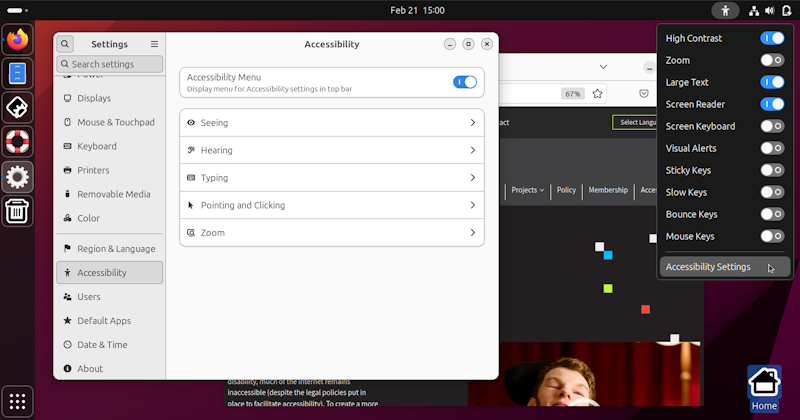
An innovative initiative is underway to revolutionise accessibility in free software platforms. Spearheaded by a collaborative effort, this next-generation accessibility architecture aims to address critical challenges and advance the state of accessibility technology.
The proposed architecture, outlined in a high-level overview, sets ambitious goals focused on enhancing user experience and inclusivity. Key objectives include sandboxing support, window system independence, and minimal impact on performance and resource usage. Moreover, the architecture prioritises low latency and efficient support for assistive technologies, ensuring responsiveness and accessibility for all users.
In the landscape of free software platforms, the graphical interface of Linux has historically posed challenges for individuals with disability, lacking the robust commercial support of major corporations. While the community efforts to date have been admirable, navigating and interacting with Linux-based systems can be difficult for users with disability, limiting their participation in digital activities. The next-generation accessibility architecture, however, represents a significant stride towards addressing these challenges. By prioritising low latency, efficient assistive technology support, and network transparency, the architecture aims to enhance accessibility and usability in Linux environments.
Central to the architecture is a push-based approach, where providers transmit full accessibility trees and incremental updates to clients. This innovative method ensures real-time responsiveness, even in scenarios where the application’s UI thread may be busy or unresponsive. Additionally, the architecture emphasises network transparency and one-to-many use cases, enabling accessible remote desktops and accessible screencasts.
The GNOME interface stands as one of the most widely used graphical environments within the Linux software platform, and this initiative represents a significant endeavour towards enhancing its accessibility. By addressing critical challenges and implementing innovative solutions, the project aims to make GNOME and similar environments more inclusive, ensuring that individuals of all abilities can fully engage with digital resources.
Despite the promising benefits, the push-based architecture also presents challenges, particularly regarding performance and hit-testing functionality. However, the project team remains confident that the benefits far outweigh the risks, as the architecture represents a significant leap forward in accessibility technology.
Looking ahead, the project plan includes prototyping providers and clients, with a focus on web browsing as a key validation use case. Implementation efforts will prioritise compatibility with existing technologies while laying the groundwork for future advancements.
The innovative initiative to revolutionise accessibility in free software platforms is receiving substantial support from the German government, which heavily relies on Linux systems.
In conclusion, the next-generation accessibility architecture holds tremendous promise for fostering inclusivity and advancing accessibility in free software platforms. By leveraging innovative approaches and collaborative efforts, this initiative seeks to empower users of all abilities and ensure equal access to digital resources.
To find out more about these developments, read the GNOME’s development guide.
